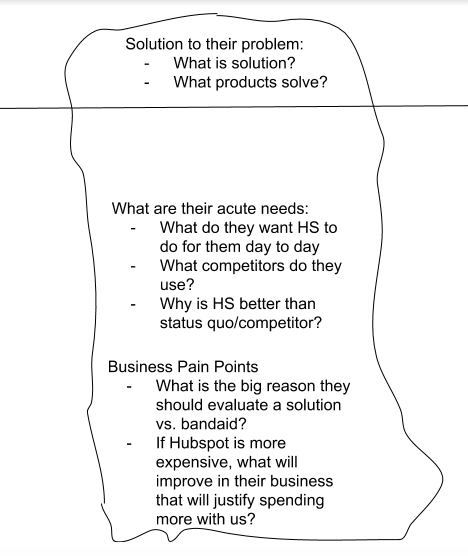A sales process is like a figure skating routine.
Both are guided by a series of predetermined steps — featuring promising buildup and a dramatic, bombshell conclusion.
The steps between prospecting and closing are essentially the same as those between a leadup like a camel spin and a finale like triple axel or backflip (which I found out is banned in competition while looking up figure skating moves to write this introduction because apparently, the figure skating world hates fun).
Yes, the two are fundamentally similar, and while neither salespeople nor figure skaters can deviate too far from their predetermined routines, they can certainly find ways to simplify those processes.
Figure skaters can sharpen their skates, practice specific techniques that help with multiple moves, and wear absolutely electrifying outfits to wow the judges like the one shown below.
Image Source: Cosmopolitan
And while no adjustments salespeople can make to their sales processes can touch the earth-shattering next-level-ness of that tiger costume, they can certainly take strides to make their professional lives a little easier.
We reached out to some HubSpot experts to get their takes on the subject. Here’s what they had to say.
Simplifying Your Sales Process
A sales process generally abides by some sort of step by step format — typically covering aspects of a sale like prospecting, connecting, qualifying, researching, handling objections, closing, and ongoing communication.
The steps and tactics that compose your sales process need to be specific and repeatable — that kind of structure defines the concept itself. That said, your process doesn’t necessarily need to fit some pre-built, cookie-cutter mold.
Though yours will likely cover the bases listed above with a consistent, somewhat systematic approach, there’s always room for some improvisation, creative tricks, and clever hacks to streamline and simplify your process.
Here are some of the approaches some HubSpot experts came up with.
How to Simplify Your Sales Process
Leia Dudek, Channel Account Manager
I’ve always had this thought of keeping it simple around the “why” behind why someone might buy — meaning, you may be able to uncover 45 things you can help a prospective client with, but you shouldn’t overwhelm them.
Instead, identify three or four high priority items you can address and use to close the deal. Once you identify those items, repeat that process. Ask for confirmation that these are the areas they want help with and even have the prospect rank them.
If you do your job right, you just ask the questions and they give you the answers to the test.
Lyndon Burke, Senior Account Executive
My sales process usually gets overcomplicated after discovery when I move into demoing the solution and addressing objections. One of the biggest causes of this trend is being caught trying to tailor a solution to all of a prospect’s pain points and challenges. That leads to more objections and additional required steps coming up that I didn’t uncover as we continue the sales process
One tactic I use to simplify the sales process is ranking their pain points or challenges and understanding those that are most important to them — typically just one or two — and focusing the demo around those points. This reduces the likelihood of introducing additional variables into the process.
In HubSpot’s case, our solutions can solve lots of problems. If we’re too wide-ranging, we run the risk of opening up the scope of the evaluation and bringing in extra stakeholders. That tends to make the process more complex and, in turn, considerably slower.
Mintis Hankerson, Senior Sales Manager
One way I have simplified the sales process for reps is by thinking of the process of selling in more human terms. I built what I refer to as my “iceberg chart” — based on Cognitive Behavioral Therapy (CBT).
It compares selling to our emotions and behaviors, allowing us to understand why we act the way we do and how we sell. What’s “under the surface” of our behavior is also “under the surface” for why customers buy HubSpot.
Here’s what that chart looks like:

Dan Tyre, Sales Director, HubSpot Employee Number 6
I have five key points I check off when I try to simplify my sales process:
1. Use a scheduling link.
If you are still scheduling your meetings in email, stop now! You can get a free HubSpot scheduling widget that puts your schedule in the hands of your prospect.
It lets them schedule the time and the time zone, so they are more likely to attend. Also, they can see a picture of you. Additionally, it automatically converts to their time zone, and they can schedule however long a meeting they need.
2. Schedule a 15-minute conversation to see which stage the prospect is in at the very beginning.
You need to see where they stand — whether that be education, consideration, or decision. That will help inform your approach and prioritize your time.
3. Ask your prospect, “How can we make this easy for you?”
It’s a great question that can simplify the sales process. Sometimes I’ll even write it down like a flow diagram, so we don’t miss anything as we step through the process — the real complexity stems from any curveballs that get thrown your way, so being as thorough as possible is key.
4. Explain your entire sales process early in the process so the prospect knows what to expect.
If a prospect is in decision mode, I’ll let them know that we’ll move from connect to discovery to solutions overview to answering questions to being ready to start. That process generally takes about 15 days, and I’ve actually sent prospects a diagram of how we do it.
5. Finally, start every call with a review of both what we’ve already done and what we still need to do.
That way, we start on the same page — precisely where we are at.
Sales processes can be tricky to establish, abide by, and see success with. Both finding and consistently carrying out a process that delivers results without taking too much out of you might be a tall order. That’s why you should always be looking for some ways to streamline and smooth out whatever one you’re working with.
![]()



![Read more about the article 100+ Business Name Ideas to Inspire You [+7 Brand Name Generators]](https://www.dimaservices.agency/wp-content/uploads/2022/05/32f9dbf1-275f-4e21-bbed-238f0923e637-1-300x44.png)
